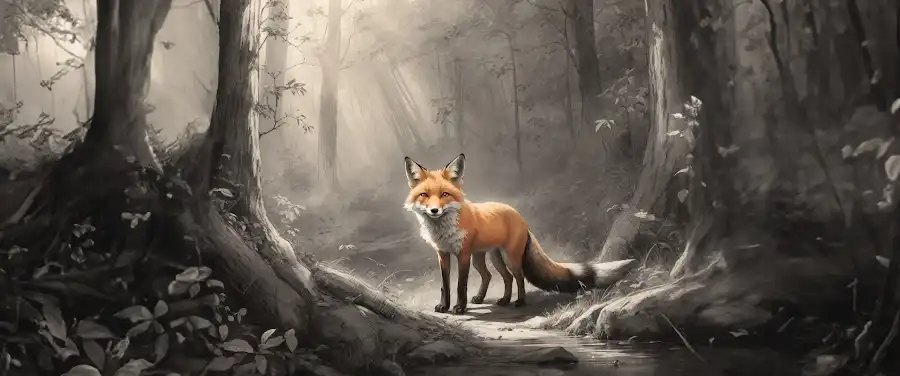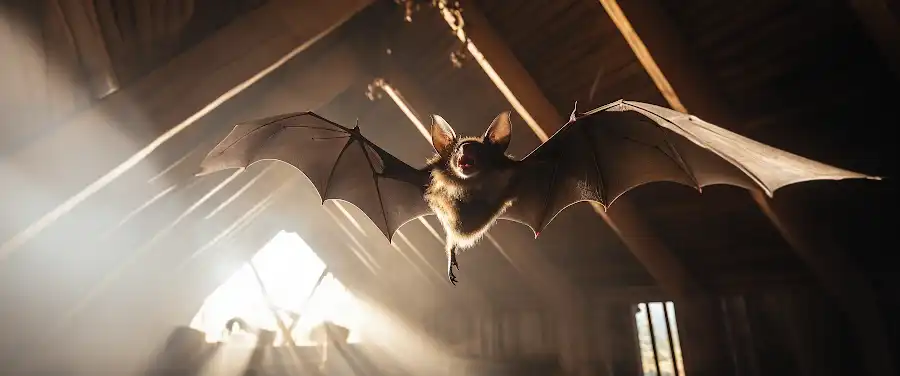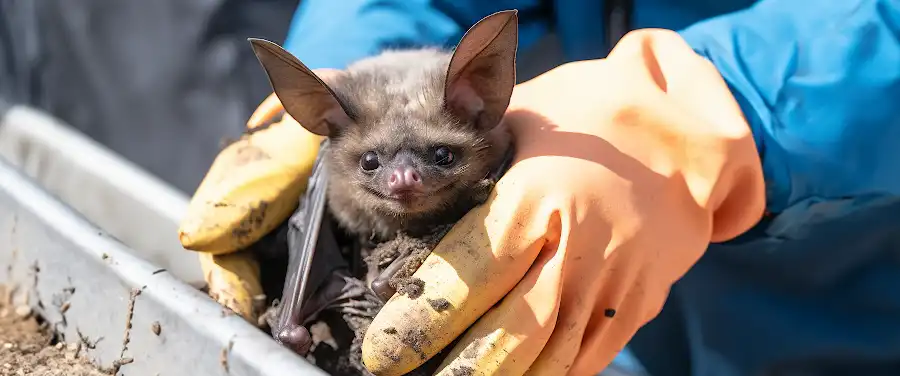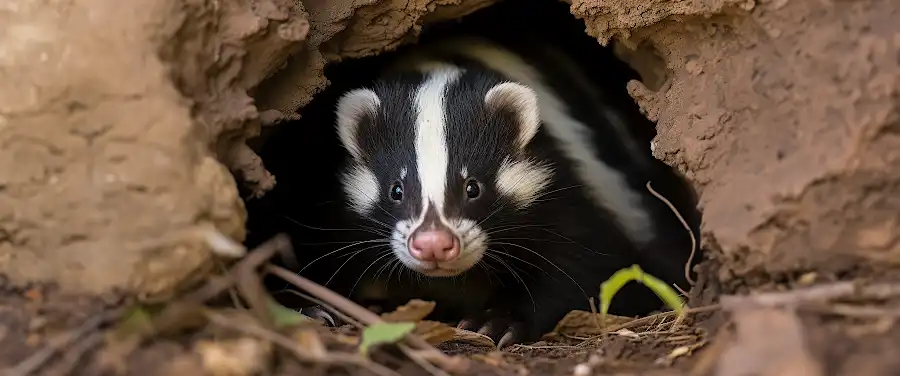
Isn’t nature full of intriguing surprises? Especially when it comes to the curiously captivating world of the black-and-white enigma, the skunk. Yes, you read it right, we’re going to dive deep into the less explored, yet fascinating realm of skunk species, particularly the most recognized representative, the striped skunk.
Tell me one thing – when you think of skunks, what’s the first thing that pops into your mind? Probably their notorious defense mechanism, right? However, beneath the overwhelming scent lies a fascinating creature with a unique lifestyle. Fear not, this odorous adventure is less about their smell, and more about an introduction to skunks from an entirely new perspective – their habitats and breeding patterns. After all, there’s a lot more to these critters than meets the ‘nose’, or in this case, the eye.
Now, put those preconceived notions aside as we set our course towards the wild, sprinkled generously with a dash of intrigue, on a journey to understand skunks and their lifestyles much better. Indeed, these creatures are not just about their scent-sational defense but about the secrets they carry within their habitats and fascinating breeding patterns. We’ll be delving right into the heart of Central Florida to uncover these mysteries. Ready to embark on this skunky expedition? Let’s sally forth!
Well, that’s enough for the warm-up, shall we move towards the juicy part of this adventure? Let’s explore the mysterious world where skunks live and their intriguing intricate love life. Brace yourself, as the secrets are about to be unveiled!
Skunk Breeding Patterns: An Overview
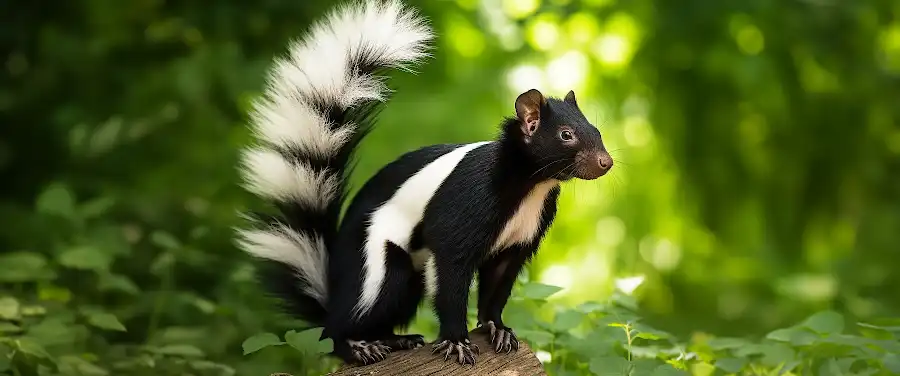
With an intriguing and mysterious lifestyle, skunks are well-recognized inhabitants of Central Florida. Distinguished by their distinct black and white striped coats, these pretty pint-sized creatures have some truly fascinating reproductive facts that we don’t usually get to witness. Let’s delve into the secretive world of skunks and get to know them better.
One of the most defining features of skunk breeding habits unfolds during the mating season. In Central Florida, the skunk mating season often falls between late February and early March. Love is certainly in the air as skunks engage in their courtship ritual during this period, with males traveling far and wide to seek out a potential partner.
Once the mating has occurred, the gestation period begins. Expectant skunk mothers usually carry their young for roughly 60-75 days before finally giving birth to their adorable offspring. This is where the real tenderness of skunk reproduction comes into play. A mama skunk typically delivers between four to seven babies – called kits – at a time. These newborn skunks stay with their mother for about three months, relying on her completely for nourishment and protection.
Irrespective of many misconceptions revolving around skunks, their breeding cycle is an interesting natural phenomenon. According to the information available on the official Florida Wildlife Commission website, there is still much to explore about the secretive world of skunk younglings and their parents.
Are Skunks Solitary or Social Animals?
Now, let’s dive a bit deeper into the social behavior of skunks. Given the notable silence around their lifestyle, one might wonder: are skunks social or solitary animals?
Interestingly, skunks are largely solitary creatures. This means they prefer to live alone rather than in groups. The majority of their lives are spent foraging and sleeping in solitude unless during the breeding season when male skunks seek out females to mate with.
Moreover, skunks are not territorial and do not inhabit fixed burrows or dens. They are opportunistic animals, making their dens in logs, under buildings, or in other natural formations where they can stay concealed from their predators.
Despite this penchant for solitude, skunk interactions do occur more frequently in colder regions. Skunks in these areas are known to “den up” together, particularly in the winter months, to exchange body heat and stay warm.
By understanding the complexities of skunk behavior, we can appreciate these creatures beyond their infamous defensive spray mechanism, and truly begin to respect their unique place in nature’s grand mosaic.
As we continue to unveil the secrets of skunk life, our next focus will be on the fascinating aspect of ” Skunk Behavior and Defense Mechanisms”. Stay tuned to learn more about these incredible, yet often misunderstood creatures.
Conclusion
In the end, it’s clear that understanding the skunk habitats and breeding patterns isn’t only for the wildlife enthusiasts or professionals. It’s a shared responsibility for every resident in Central Florida. Unraveling the secrets of these striped species and their den life gives us valuable insights that help us coexist harmoniously.
First, let’s take a quick reminder. A skunk’s habitat typically includes forest edges, woodlands, grasslands and open areas close to human settlements. Skunks play a crucial role in our ecosystem, feeding on pests that would otherwise be problematic.
Moreover, if you’re a homeowner, you might just want to embrace the fact that these nocturnal creatures could be dwelling near your property. After all, their mating habits don’t interfere much with ours. Skunks are primarily polygynous, meaning one male mates with several females. Breeding usually occurs from late February to early March, and the young ones, called kits, are usually born around May.
Understanding how skunks live and breed is a crucial step toward developing respect for nature and fostering an environment where all organisms can thrive. It’s easy to see skunks as a nuisance, especially given their notorious defense spray. However, the more we learn about their behavior, habitats, and breeding patterns, the better equipped we are to coexist with them peacefully.
Now, let’s talk about you. Our everyday actions can significantly affect the local fauna, and skunks are no different. Simple steps like securing your garbage cans can go a long way in limiting any unwelcome interactions with these creatures. Furthermore, remember that they are most active during dawn and dusk, likely the times you are driving to and from work. Hence, let’s drive attentively to avoid unnecessary collisions with wildlife.
In conclusion, remember to take a step back, marvel at, and appreciate the intricacies of nature. Our understanding and subsequent response to the wildlife living among us speaks volumes about who we are as individuals and as a community. Ultimately, it’s our shared duty to respect and protect our natural surroundings, from the smallest insect to the mightiest reptile, and yes, the striped skunk. The study of skunk habitats and breeding patterns has indeed been fascinating, shedding light upon the importance of respecting wildlife and their habitats.

